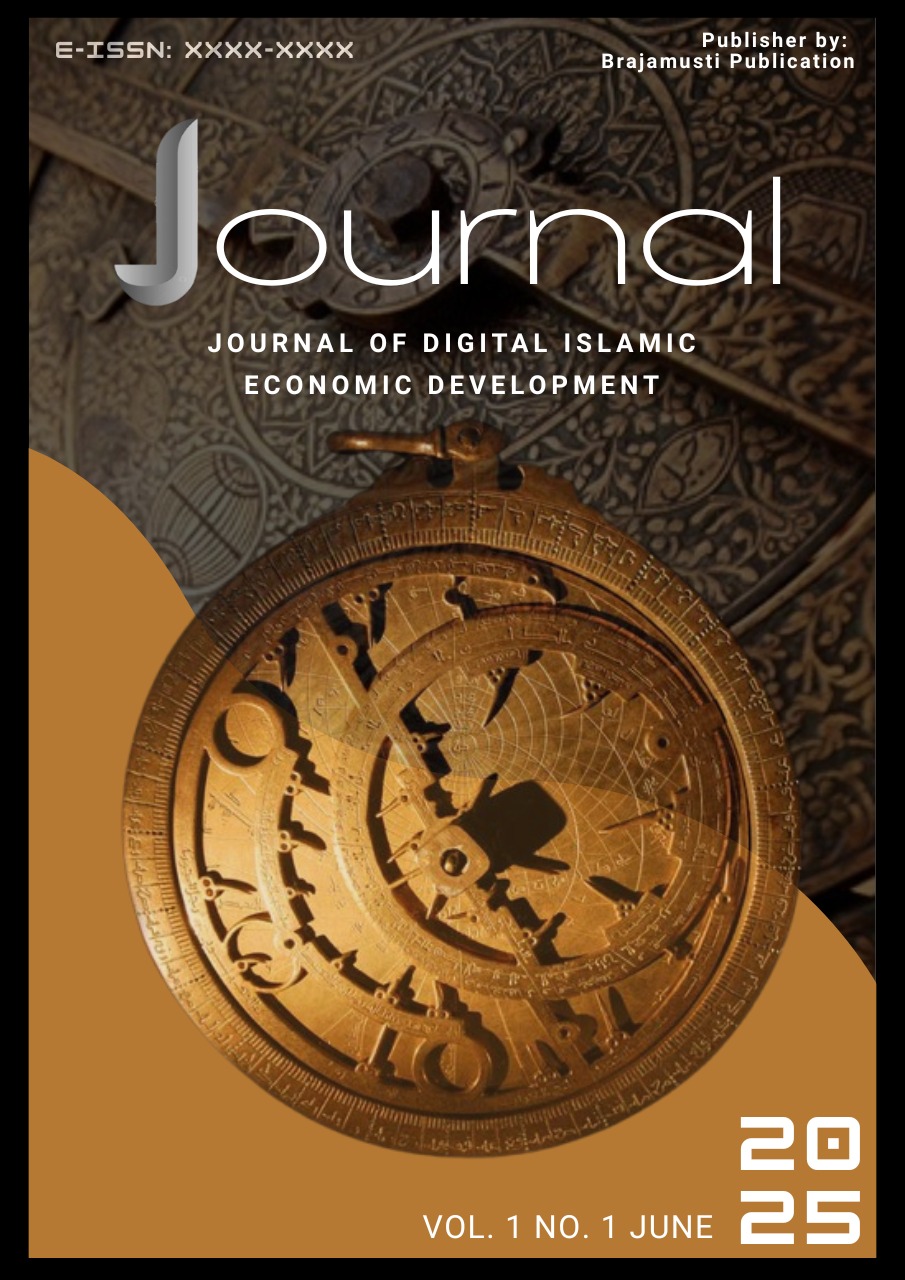Banking Industry Strategies in Facing Market Changes and Digital Transformation in Indonesia
DOI:
https://doi.org/10.70992/a4pvvj74Keywords:
Strategi Industri Perbankan, Perubahan Pasar, Transformasi DigitalAbstract
The Indonesian banking industry is facing major challenges due to digital transformation and market changes. Banks must use creative strategies to remain competitive due to rapid digitalization, driven by advances in financial technology (fintech) and changes in customer behavior. Using a qualitative methodology, this study aims to analyze the strategies of the Indonesian banking industry in facing digital transformation and market changes. Data collection techniques used were through observation, interviews, and document analysis. The results of the study indicate that innovation in digital products and services, technological advances, collaboration with fintech, and optimization of data analysis for business decision-making processes are the main strategies implemented by the banking industry. In addition, compliance with regulations and cybersecurity elements are very important to achieve digital transformation. Furthermore, these findings show that banks in Indonesia are able to utilize digital technology to improve operational efficiency and expand market reach, despite facing challenges such as strict regulations and increasing competition. In addition to providing significant benefits to stakeholders in the banking industry, this study can be a reference for building more efficient strategies to face continuous market changes.
References
Accenture. (2023). Big Data and AI in Banking: Future Trends and Impact. London: Accenture. Diakses dari https://www.accenture.com.
Bank Indonesia. (2023). Laporan Stabilitas Sistem Keuangan 2023. Jakarta: Bank Indonesia.
Bank Indonesia. (2023). Statistik Perbankan Indonesia. Jakarta: Bank Indonesia.
Chen, Y., et al. (2020). Digital Banking and Customer Satisfaction: Evidence from Asia. Journal of Financial Services Research, 58(4), 567-589.
Chen, Y., Zhang, Y., & Wang, X. (2022). The Impact of Fintech on Traditional Banking: Evidence from Indonesia. International Journal of Financial Studies, 10(2), 45-60. https://doi.org/10.3390/ijfs10020045
Claessens, S., et al. (2020). Concentration in Banking: Implications for Competition and Stability. IMF Working Paper, WP/20/123.
Darmawan, A., et al. (2021). Digital Transformation in Banking: A Global Perspective. Journal of Financial Innovation, 7(2), 45-60.
Hendriyani, C., & Raharja, S. (2021). The Impact of Digital Transformation on Banking Efficiency in Indonesia. Journal of Banking and Finance, 45(3), 234-250.
Indonesia Cyber Security Index (ICSI). (2023). Laporan Keamanan Siber di Sektor Perbankan Indonesia. Jakarta: ICSI. Diakses dari https://icsi.id.
Khan, M. A., Khan, M. N., & Khan, A. (2021). Digital Banking: A Review of the Literature and Future Research Directions. Journal of Banking and Finance, 124, 105-120. https://doi.org/10.1016/j.jbankfin.2021.105120
KPMG. (2022). Banking Industry Outlook 2022. Diakses dari www.kpmg.com.
Kurniawan, A., et al. (2022). Digitalization and Profitability in Small Banks: Evidence from Indonesia. Asian Journal of Business Research, 12(1), 78-95.
Lee, J., & Shin, D. (2020). The Impact of Digital Transformation on Banking Performance: Evidence from South Korea. Journal of Business Research, 112, 1-10. https://doi.org/10.1016/j.jbusres.2019.10.045
Mandiri. (2023). Layanan Digital Perbankan dan AI Chatbot. Jakarta: Bank Mandiri. Diakses dari https://www.bankmandiri.co.id.
McKinsey & Company. (2021). The Future of Banking: How Digital Transformation is Reshaping the Industry. Retrieved from https://www.mckinsey.com/industries/financial-services/our-insights/the-future-of-banking
McKinsey & Company. (2021). The Future of Digital Banking in Southeast Asia. Diakses dari www.mckinsey.com.
Mutiasari, A. I. (2020). Perkembangan industri perbankan di era digital. Jurnal Ekonomi Bisnis Dan Kewirausahaan, 9 (2), 32–41. https://doi.org/10.47942/iab.v9i2.541
Ngamal, Y., & Perajaka, M. A. (2021). Penerapan model manajemen risiko teknologi digital
di lembaga perbankan berkaca pada cetak biru transformasi digital perbankan
Indonesia. Jurnal Manajemen Risiko, 2 (2), 59–74.
https://doi.org/10.33541/mr.v2iiv.4099
Nustini, Y., Ummah, M., & Samira, W. A. (2020). Inovasi pemanfaatan teknologi informasi
pada industri perbankan studi terhadap penggunaan mobile banking (1st ed.).
Penerbit EKONISIA Fakultas.
OECD. (2023). Digital Literacy and Financial Inclusion. Paris: OECD Publishing.
Otoritas Jasa Keuangan (OJK). (2022). Laporan Perkembangan Sektor Perbankan. Jakarta: OJK.
Otoritas Jasa Keuangan (OJK). (2023). Laporan Perkembangan Perbankan Nasional 2023. Jakarta: OJK.
Porter, M. E. (1985). Competitive Advantage: Creating and Sustaining Superior Performance. New York: Free Press.
PwC. (2022). Digital Banking Survey 2022. Diakses dari www.pwc.com.
Sari, R., & Wijaya, T. (2021). The Cost-Benefit Analysis of Digital Transformation in Indonesian Banks. Journal of Economic Studies, 49(2), 345-360.
Syafie, Indrajit, R. E., & Dazki, E. (2022). Kesiapan teknologi informasi perbankan hadapi
revolusi industri era 4.0. JATISI (Jurnal Teknik Informatika Dan Sistem Informasi, 9
(1), 533–546. https://doi.org/10.35957/jatisi.v9i1.1540
Teece, D. J., et al. (2020). Dynamic Capabilities and Strategic Management. Strategic Management Journal, 41(2), 123-145.
World Bank. (2023). Digital Financial Services in Developing Countries. Washington, DC: World Bank.
Zhang, J., Wang, Y., & Liu, H. (2021). The Influence of Digital Banking on Customer Satisfaction: Evidence from China and Indonesia. Journal of Retailing and Consumer Services, 59, 102-110. https://doi.org/10.1016/j.jretconser.2020.102110



